 Technology peripherals
Technology peripherals
 AI
AI
 A new large-scale voice dialogue model is launched in China: led by Kai-Fu Lee, with participation from Zero One and All, supporting Chinese and English bilingualism and multi-modality, open source and commercially available
A new large-scale voice dialogue model is launched in China: led by Kai-Fu Lee, with participation from Zero One and All, supporting Chinese and English bilingualism and multi-modality, open source and commercially available
A new large-scale voice dialogue model is launched in China: led by Kai-Fu Lee, with participation from Zero One and All, supporting Chinese and English bilingualism and multi-modality, open source and commercially available
The first Chinese-English bilingual voice dialogue open source large model is here!
In the past few days, a paper on a large-scale speech-text multi-modal model has appeared on arXiv, and the name of Kai-fu Lee’s large model company 01.ai - 01.ai - has appeared among the signature companies.
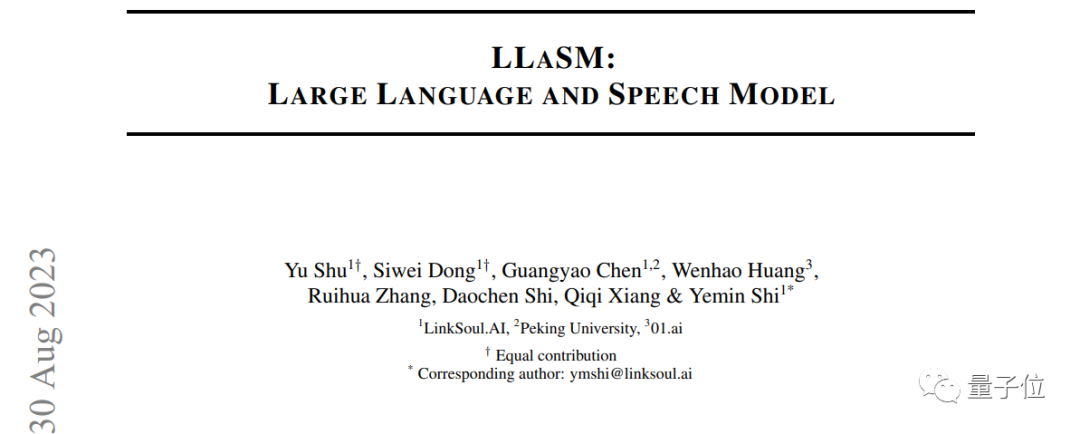 Picture
Picture
This paper introduces a Chinese-English bilingual commercial dialogue model called LLaSM. This model not only supports recording and text input, but also can realize the function of "hybrid doubles"
 Picture
Picture
Research points out that "voice chat" is a combination of AI and A more convenient and natural way for people to interact is not just through text input
using large models. Some netizens are already imagining the scenario of "writing code while lying down and talking".
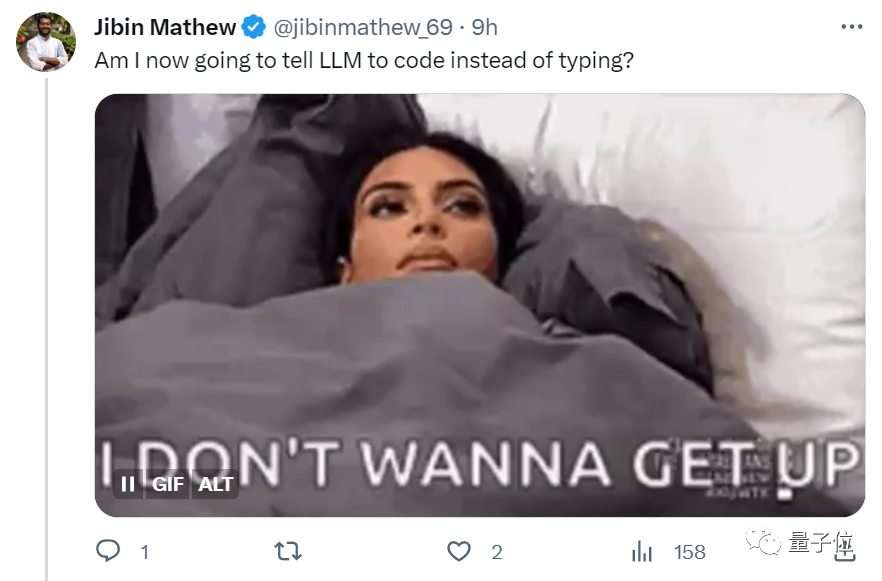 Picture
Picture
This research was jointly completed by LinkSoul.AI, Peking University and 01Wanyuan. It is now open source and can be directly used in Try it out in Hugface
 Picture
Picture
Let’s see how it works
Supports text and voice input , can also be played on mobile phones
According to researchers, LLaSM is the first open source and commercially available dialogue model that supports Chinese and English bilingual speech-text multi-modal dialogue.
So, let’s take a look at its voice text input and Chinese-English bilingual capabilities.
First of all, let us have a cultural collision between Chinese and English and evaluate Li Bai in English:
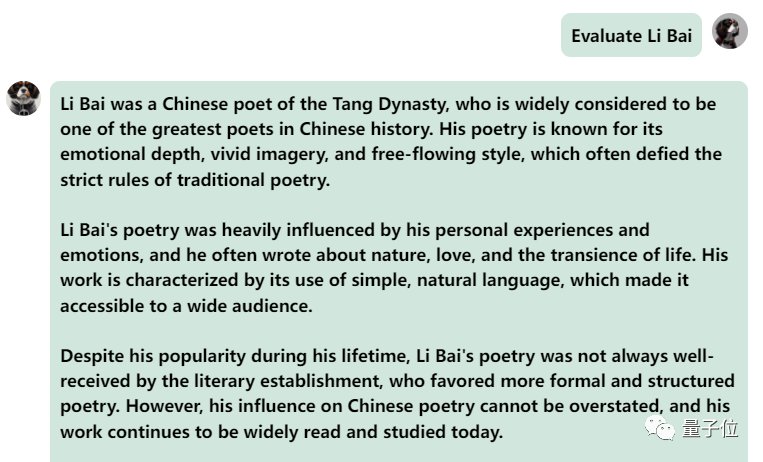 Picture
Picture
It’s okay, correct Li Bai's dynasty was mentioned. If you can’t read English, it’s no problem to have it translated directly into Chinese:
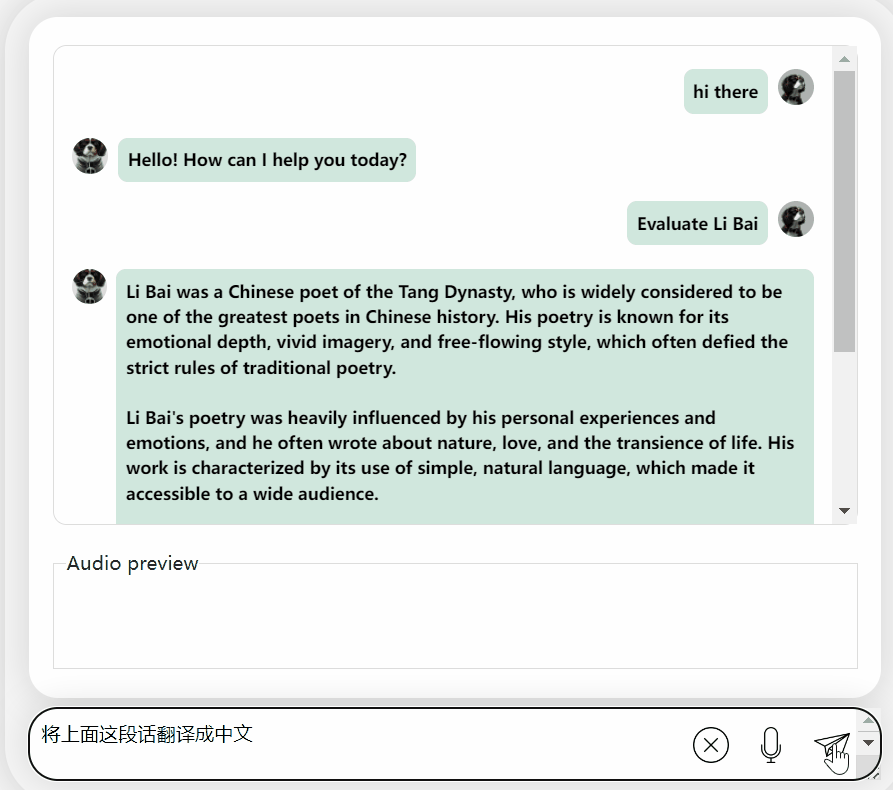 Picture
Picture
In the next exercise, let’s try Chinese A mixed-English question, adding the word "fried food" to a Chinese sentence. The output effect of the model is also quite good:
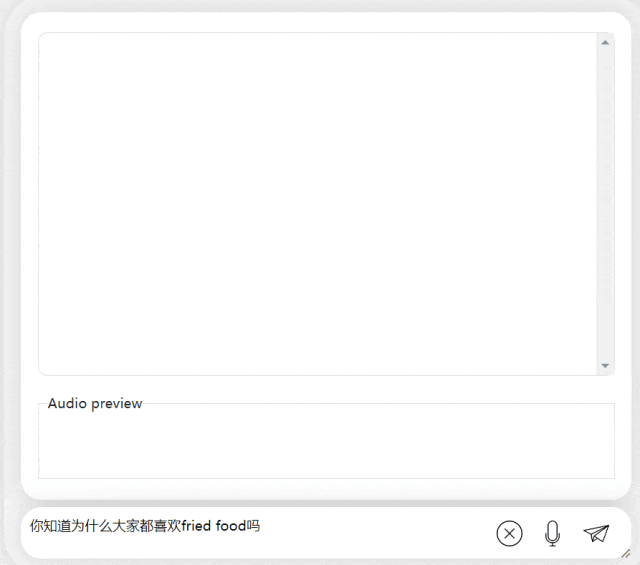 Picture
Picture
Let us try the model again and let it conduct some evaluations to see which one is better, Li Bai or Du Fu. Awesome
It can be observed that after a period of thinking, this model has given a very objective and neutral evaluation, and it also has the basic knowledge and common sense necessary for large models (manual dog head)
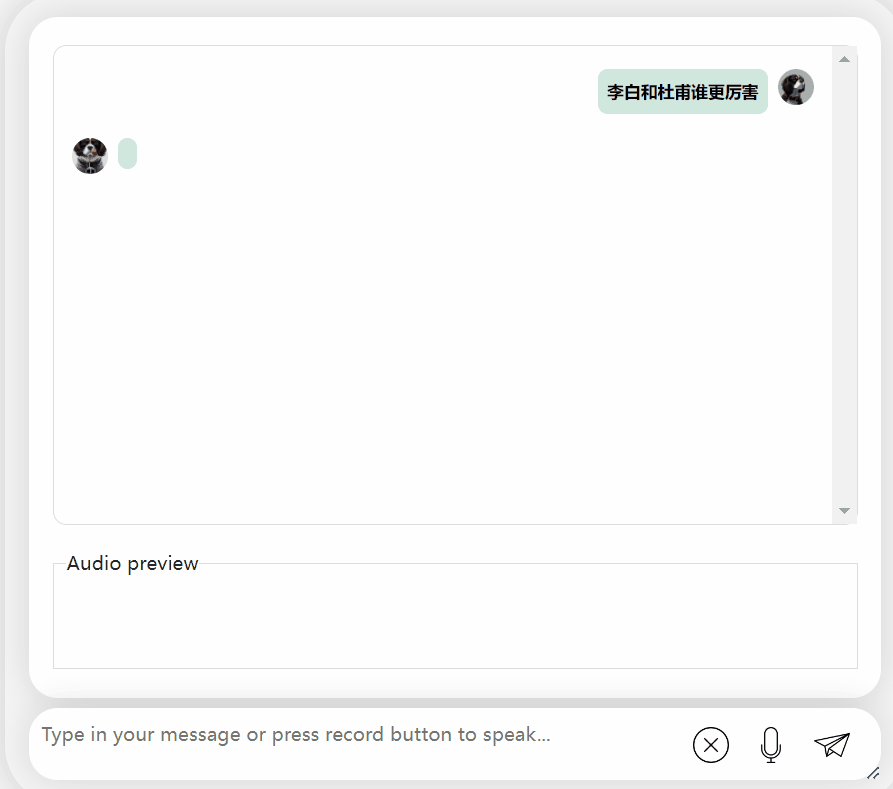 Picture
Picture
Of course, it can be played not only on computers, but also on mobile phones.
Let’s try to input “recommend a recipe to me” using voice:
You can see that the model accurately outputs an “eggplant cheese” recipe, but I don’t know if it tastes good or not.
However, when we tried it, we also found that this model sometimes had bugs.
For example, sometimes it cannot "understand human speech" very well.
Requires output of mixed Chinese and English content, it will pretend not to understand and output in English:
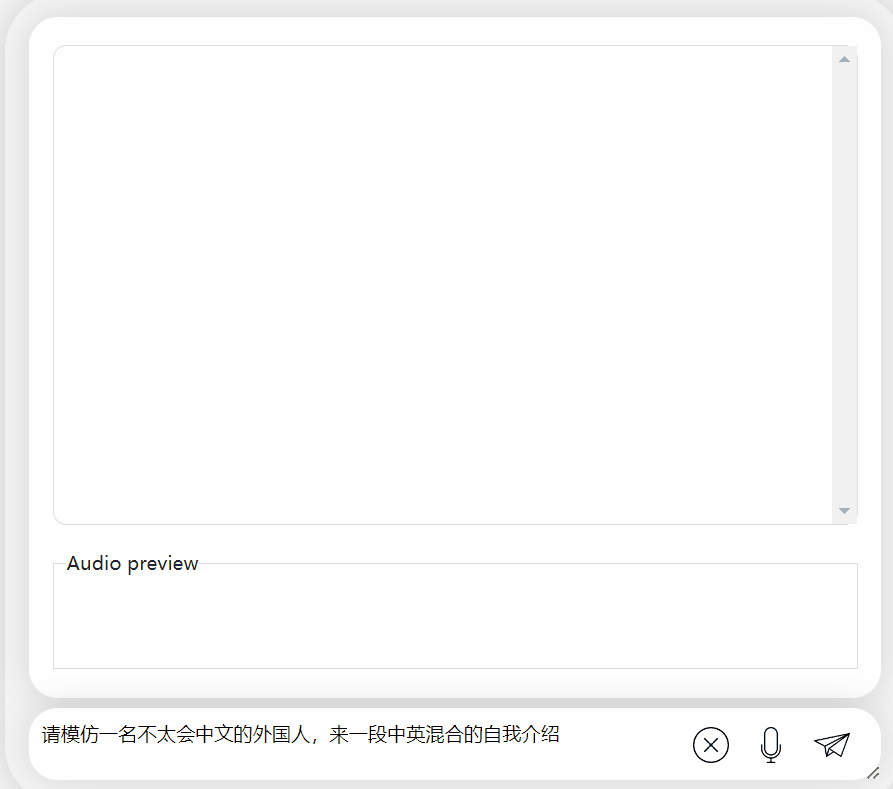 Picture
Picture
Mixed Chinese and English query When I want to listen to "Taylor Swift's Red", the model has a serious error. It keeps outputting the same sentence repeatedly and cannot even stop...
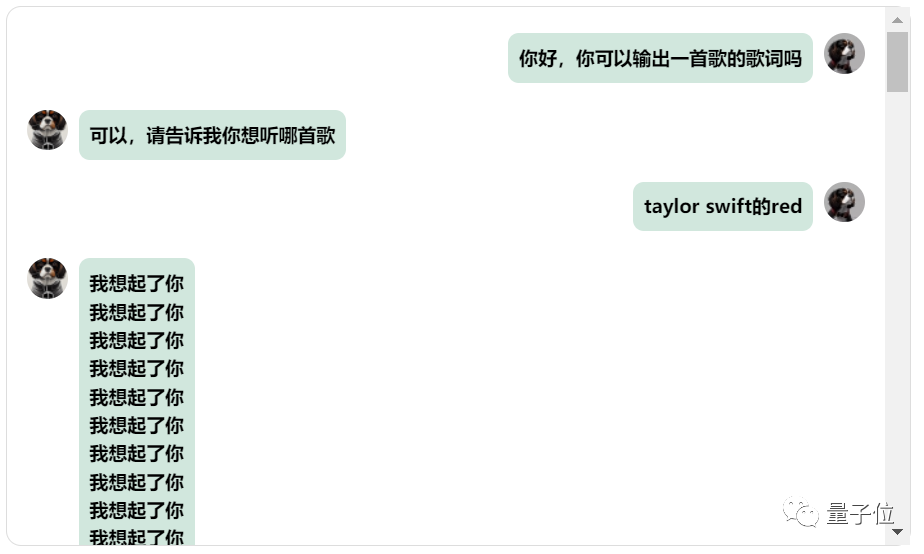 Picture
Picture
Generally speaking, when encountering questions or requirements that are mixed in Chinese and English, the model output capability is still not very good.
But if separated, its ability to express Chinese and English is still good.
So, how is such a model implemented?
What new model did you make?
Judging from the trial, LLaSM has two main features: one is to support Chinese and English input, and the other is dual input of voice and text.
To achieve these two points, we need to make some adjustments to the architecture and training data respectively.
In terms of architecture, LLaSM integrates the current speech recognition model and the large language model.
LLaSM consists of three parts, including the automatic speech recognition model Whisper, the modal adapter and the large model LLaMA.
In this process, Whisper is responsible for receiving the original speech input and outputting a vector representation of the speech features. The role of the modal adapter is to align speech and text embeddings. LLaMA is responsible for understanding voice and text input instructions and generating replies
 Picture
Picture
The training of the model is divided into two stages. The first stage is to train the modality adapter, where the encoder and large model are frozen, allowing the model to learn the alignment of speech and text. The second stage is to freeze the encoder, train modal adapters and large models to improve the model's multi-modal dialogue capabilities
On the training data, the researchers compiled a database containing 199,000 dialogues and 508,000 Dataset of speech-text samples LLaSM-Audio-Instructions.
Among the 508,000 speech-text samples, 80,000 are Chinese speech samples, while 428,000 are English speech samples
The researchers mainly based on WizardLM, ShareGPT and GPT-4 - Data sets such as LLM use text-to-speech technology to generate voice packets for these data sets while filtering out invalid conversations.
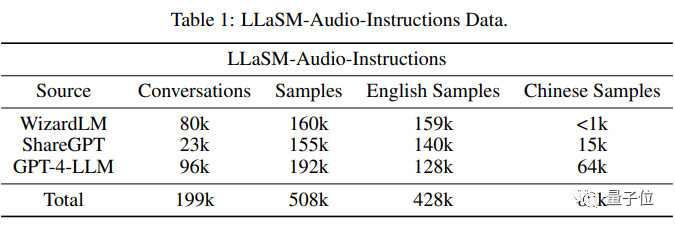 Picture
Picture
This is also the largest Chinese and English voice text instruction following data set, but it is still being sorted out. According to the researchers, it will be completed It will be open sourced later.
However, there is currently no comparison of the output effects of this paper with other speech models or text models
Introduction to the author
The authors of this paper are from LinkSoul.AI, Peking University Yu Shu and Siwei Dong, co-authors of Zero One Thing
, both come from LinkSoul.AI and previously worked at Beijing Zhiyuan Artificial Intelligence Research Institute.
LinkSoul.AI is an AI start-up company that has previously launched the first open source Llama 2 Chinese language large model.
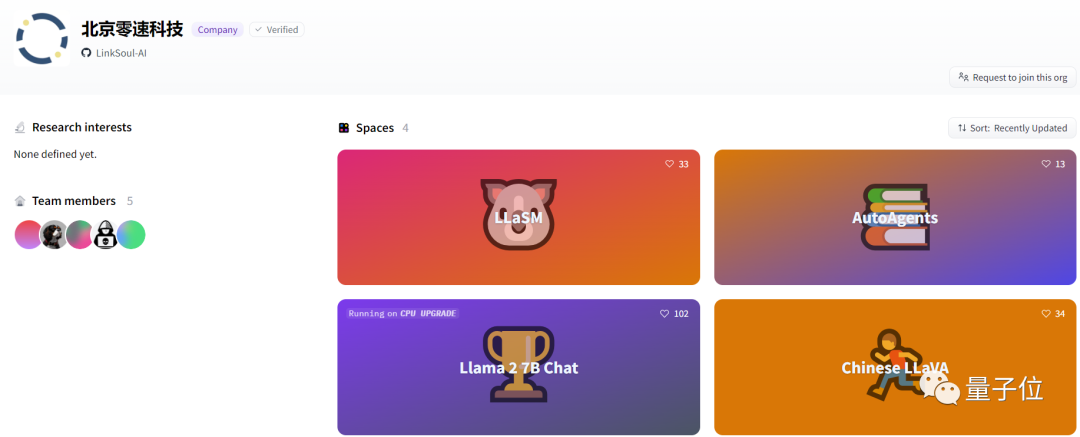 Picture
Picture
As a large model company under Kai-fu Lee, Zero One and One Wagon also contributed to this research. The Hugging Face page of the author Wenhao Huang shows that he graduated from Fudan University.
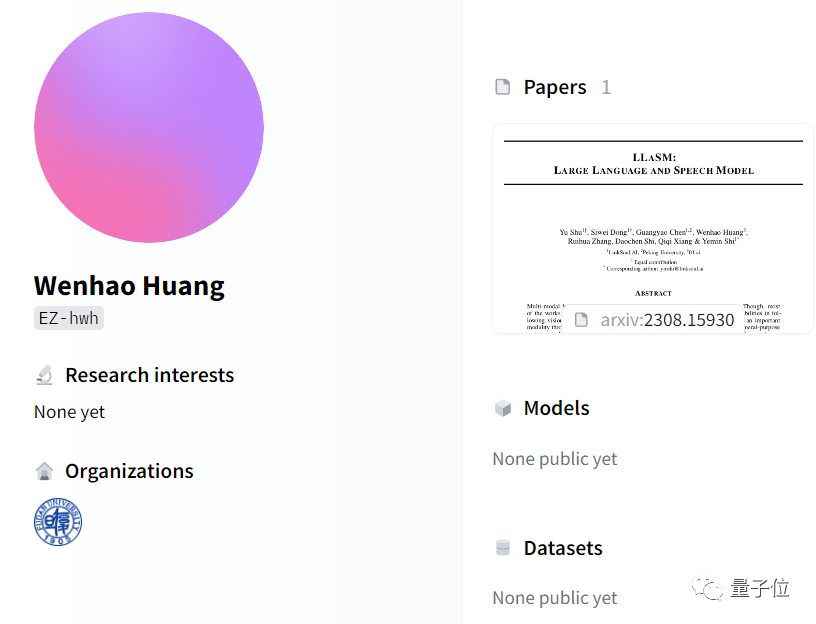 Picture
Picture
Paper address:
https://www.php.cn/link/47c917b09f2bc64b2916c0824c715923
Demo address:
https://www.php.cn/link/bcd0049c35799cdf57d06eaf2eb3cff6
The above is the detailed content of A new large-scale voice dialogue model is launched in China: led by Kai-Fu Lee, with participation from Zero One and All, supporting Chinese and English bilingualism and multi-modality, open source and commercially available. For more information, please follow other related articles on the PHP Chinese website!

Hot AI Tools

Undresser.AI Undress
AI-powered app for creating realistic nude photos

AI Clothes Remover
Online AI tool for removing clothes from photos.

Undress AI Tool
Undress images for free

Clothoff.io
AI clothes remover

AI Hentai Generator
Generate AI Hentai for free.

Hot Article

Hot Tools

Notepad++7.3.1
Easy-to-use and free code editor

SublimeText3 Chinese version
Chinese version, very easy to use

Zend Studio 13.0.1
Powerful PHP integrated development environment

Dreamweaver CS6
Visual web development tools

SublimeText3 Mac version
God-level code editing software (SublimeText3)

Hot Topics
 1386
1386
 52
52
 The world's most powerful open source MoE model is here, with Chinese capabilities comparable to GPT-4, and the price is only nearly one percent of GPT-4-Turbo
May 07, 2024 pm 04:13 PM
The world's most powerful open source MoE model is here, with Chinese capabilities comparable to GPT-4, and the price is only nearly one percent of GPT-4-Turbo
May 07, 2024 pm 04:13 PM
Imagine an artificial intelligence model that not only has the ability to surpass traditional computing, but also achieves more efficient performance at a lower cost. This is not science fiction, DeepSeek-V2[1], the world’s most powerful open source MoE model is here. DeepSeek-V2 is a powerful mixture of experts (MoE) language model with the characteristics of economical training and efficient inference. It consists of 236B parameters, 21B of which are used to activate each marker. Compared with DeepSeek67B, DeepSeek-V2 has stronger performance, while saving 42.5% of training costs, reducing KV cache by 93.3%, and increasing the maximum generation throughput to 5.76 times. DeepSeek is a company exploring general artificial intelligence
 AI subverts mathematical research! Fields Medal winner and Chinese-American mathematician led 11 top-ranked papers | Liked by Terence Tao
Apr 09, 2024 am 11:52 AM
AI subverts mathematical research! Fields Medal winner and Chinese-American mathematician led 11 top-ranked papers | Liked by Terence Tao
Apr 09, 2024 am 11:52 AM
AI is indeed changing mathematics. Recently, Tao Zhexuan, who has been paying close attention to this issue, forwarded the latest issue of "Bulletin of the American Mathematical Society" (Bulletin of the American Mathematical Society). Focusing on the topic "Will machines change mathematics?", many mathematicians expressed their opinions. The whole process was full of sparks, hardcore and exciting. The author has a strong lineup, including Fields Medal winner Akshay Venkatesh, Chinese mathematician Zheng Lejun, NYU computer scientist Ernest Davis and many other well-known scholars in the industry. The world of AI has changed dramatically. You know, many of these articles were submitted a year ago.
 Google is ecstatic: JAX performance surpasses Pytorch and TensorFlow! It may become the fastest choice for GPU inference training
Apr 01, 2024 pm 07:46 PM
Google is ecstatic: JAX performance surpasses Pytorch and TensorFlow! It may become the fastest choice for GPU inference training
Apr 01, 2024 pm 07:46 PM
The performance of JAX, promoted by Google, has surpassed that of Pytorch and TensorFlow in recent benchmark tests, ranking first in 7 indicators. And the test was not done on the TPU with the best JAX performance. Although among developers, Pytorch is still more popular than Tensorflow. But in the future, perhaps more large models will be trained and run based on the JAX platform. Models Recently, the Keras team benchmarked three backends (TensorFlow, JAX, PyTorch) with the native PyTorch implementation and Keras2 with TensorFlow. First, they select a set of mainstream
 Hello, electric Atlas! Boston Dynamics robot comes back to life, 180-degree weird moves scare Musk
Apr 18, 2024 pm 07:58 PM
Hello, electric Atlas! Boston Dynamics robot comes back to life, 180-degree weird moves scare Musk
Apr 18, 2024 pm 07:58 PM
Boston Dynamics Atlas officially enters the era of electric robots! Yesterday, the hydraulic Atlas just "tearfully" withdrew from the stage of history. Today, Boston Dynamics announced that the electric Atlas is on the job. It seems that in the field of commercial humanoid robots, Boston Dynamics is determined to compete with Tesla. After the new video was released, it had already been viewed by more than one million people in just ten hours. The old people leave and new roles appear. This is a historical necessity. There is no doubt that this year is the explosive year of humanoid robots. Netizens commented: The advancement of robots has made this year's opening ceremony look like a human, and the degree of freedom is far greater than that of humans. But is this really not a horror movie? At the beginning of the video, Atlas is lying calmly on the ground, seemingly on his back. What follows is jaw-dropping
 KAN, which replaces MLP, has been extended to convolution by open source projects
Jun 01, 2024 pm 10:03 PM
KAN, which replaces MLP, has been extended to convolution by open source projects
Jun 01, 2024 pm 10:03 PM
Earlier this month, researchers from MIT and other institutions proposed a very promising alternative to MLP - KAN. KAN outperforms MLP in terms of accuracy and interpretability. And it can outperform MLP running with a larger number of parameters with a very small number of parameters. For example, the authors stated that they used KAN to reproduce DeepMind's results with a smaller network and a higher degree of automation. Specifically, DeepMind's MLP has about 300,000 parameters, while KAN only has about 200 parameters. KAN has a strong mathematical foundation like MLP. MLP is based on the universal approximation theorem, while KAN is based on the Kolmogorov-Arnold representation theorem. As shown in the figure below, KAN has
 Time Series Forecasting NLP Large Model New Work: Automatically Generate Implicit Prompts for Time Series Forecasting
Mar 18, 2024 am 09:20 AM
Time Series Forecasting NLP Large Model New Work: Automatically Generate Implicit Prompts for Time Series Forecasting
Mar 18, 2024 am 09:20 AM
Today I would like to share a recent research work from the University of Connecticut that proposes a method to align time series data with large natural language processing (NLP) models on the latent space to improve the performance of time series forecasting. The key to this method is to use latent spatial hints (prompts) to enhance the accuracy of time series predictions. Paper title: S2IP-LLM: SemanticSpaceInformedPromptLearningwithLLMforTimeSeriesForecasting Download address: https://arxiv.org/pdf/2403.05798v1.pdf 1. Large problem background model
 Tesla robots work in factories, Musk: The degree of freedom of hands will reach 22 this year!
May 06, 2024 pm 04:13 PM
Tesla robots work in factories, Musk: The degree of freedom of hands will reach 22 this year!
May 06, 2024 pm 04:13 PM
The latest video of Tesla's robot Optimus is released, and it can already work in the factory. At normal speed, it sorts batteries (Tesla's 4680 batteries) like this: The official also released what it looks like at 20x speed - on a small "workstation", picking and picking and picking: This time it is released One of the highlights of the video is that Optimus completes this work in the factory, completely autonomously, without human intervention throughout the process. And from the perspective of Optimus, it can also pick up and place the crooked battery, focusing on automatic error correction: Regarding Optimus's hand, NVIDIA scientist Jim Fan gave a high evaluation: Optimus's hand is the world's five-fingered robot. One of the most dexterous. Its hands are not only tactile
 FisheyeDetNet: the first target detection algorithm based on fisheye camera
Apr 26, 2024 am 11:37 AM
FisheyeDetNet: the first target detection algorithm based on fisheye camera
Apr 26, 2024 am 11:37 AM
Target detection is a relatively mature problem in autonomous driving systems, among which pedestrian detection is one of the earliest algorithms to be deployed. Very comprehensive research has been carried out in most papers. However, distance perception using fisheye cameras for surround view is relatively less studied. Due to large radial distortion, standard bounding box representation is difficult to implement in fisheye cameras. To alleviate the above description, we explore extended bounding box, ellipse, and general polygon designs into polar/angular representations and define an instance segmentation mIOU metric to analyze these representations. The proposed model fisheyeDetNet with polygonal shape outperforms other models and simultaneously achieves 49.5% mAP on the Valeo fisheye camera dataset for autonomous driving



